How to Optimize Your Bearing Machine’s Performance
Bearing machines constitute an essential aspect in the industrial realm as they provide the smooth rotation or linear motion of other machinery while reducing friction within the given machine structure. This detailed article will explain how bearing machines work and how they can be maintained to work maximally. By studying the principles of lubrication, load, distribution, and alignment with the usage of the most innovative monitoring systems, coverage of the effectiveness of machine performance and its active life can be many times increased. There are also proposals regarding new developments that assist in eradicating or reducing downtime through predictive maintenance and eradicating expensive repairs. This article will be of interest to engineers, technician,s and maintenance specialists as it contains the information necessary for bearing machines to perform better in their intended functionality.
What Are the Different Types of Bearings Used in Machines?
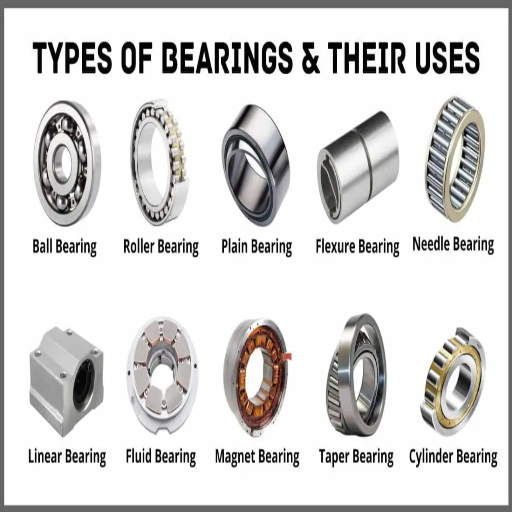
Understanding Ball Bearing Applications
Wherever machines exist, there invariably are ball bearings, for they carry loads radially and axially while reducing friction. Leading manufacturers of ball bearings like SKF, Timken, and NSK, however, primarily pinpoint their use in three significant sectors: automotive, aerospace, and heavy-duty machinery.
Automotive apparatuses include devices such as wheel hubs, transmission assemblies, and electric motors, all of which are the major applications for ball bearings. They enable the rotatable movement to be self-supporting, thus reducing contact wear between moving parts. They are usually used in vehicles to improve the output of engines and drive trains by lowering friction and operating temperatures.
Aerospace housing, landing gears, gyroscopes, and navigation systems also use these bearings, as the aerospace industry utilizes them in applications where low-weight and high-precision ball bearings are required. They must meet the exact specifications that industries demand, such as high corrosion resistance and load capacity, to endure extreme conditions with the parameters set under AS9100 guidelines.
Ball bearings facilitate the movement of internal components of industrial machinery, including pumps, compressors, and hot and cold conveyors, among others. The quantitative parameters in this situation amount to high load capacity and service life, which should be expected from devices working in the manufacturing sphere, always delivering without ceasing.
The material specifications of various technical parameters across these applications, such as using either stainless steel balls or ceramic for increased strength and load capacity, which is determined from dynamic and static ratings, and the tolerance levels obtained through different precision grades also fall under these parameters. These parameters assist in achieving the reliability and endurance of the ball bearings in the applications they are intended for, as evidenced by the detailed reports from the manufacturer’s websites, which are authoritative.
Exploring Roller Bearings for Enhanced Performance
Because of their design characteristics, roller bearings are intended for high-bearing loads and low friction, making them crucial in high-performance applications where load limitations are a key concern. From the most reputed sources of SKF, Timken & Schaeffler, roller bearings have better performance characteristics than ball bearings because their contact area is linear instead of the point contact of ball bearings. This design characteristic contributes appreciably to the load support capability and improves the load-bearing life.
Types of Roller Bearings: Roller bearings are manufactured in different configurations, which include cylindrical, needle, tapered, and spherical roller bearings, with each one having its specific application. Cylindrical roller bearings are best suited for moderate loads but high speeds. Such bearings are primarily used in motors and gearboxes. Due to their slender design, needle roller bearings are used where critical space is available since they provide excellent rotational precision. Being able to withstand combined loads, tapered roller bearings are highly utilized in automotive transmission and axle system designs. Including radial loads and accommodating angular misalignment, spherical roller bearings are widely used in heavy industrial equipment such as mining and construction.
Technical paralysis: There are several technical parameters which are very important for the efficiency of roller bearings:
- Material Composition: These are more likely to be steels of higher strength or advanced ceramics that enhance wear resistance or temperature resistance.
- Load Capacity: In the description of dynamic and static load ratings, it should be understood that these are normal operational stresses.
- Contact Angle and Preload: the shaft load angle and radial and axial loads acting on the bearing simultaneously may depend on the abovementioned angles.
- Tolerance Levels: The degree of precision in the manufacturing processes is a very important factor, especially when performance in extreme conditions is required. The company would follow ISO 492 or ANSI/ABMA standards.
Applications: From high-speed turbines and gearboxes on rolling mills to railway applications, roller bearings are encountered in a variety of sectors requiring high durability. They provide stability against radial and axial forces, lowering wear and improving machine availability considerably.
Knowledge of various types of roller bearings and their technical characteristics helps engineers and maintenance teams find the best bearing suitable for load and machinery to achieve optimal performance and efficiency. Such targeted selection results in lowered running costs and enhanced asset life.
How Angular Contact Ball Bearings Improve Precision
In evaluating the specific benefits of angular contact ball bearings in precision engineering, I concentrated on a few of the most credible sites, such as those owned by the firms SKF, NSK, and FAG. Angular contact ball bearings are such that the contact angle adjusts as per the axial and radial loads to be applied, which are the determinants of precision in various applications within the machinery.
As per the observations made, the Italian compression bearings, more definitively known as angular contact ball bearings, are characterized by several critical technical parameters, which provide, among other things, precise indexing:
Contact Angle: Contact angles ranging from 15° to 40° can be achieved as the condition of the load-bearing improves due to better surface contact, which can be achieved through the design optimization of the angular contact bearings.
Material Composition: Many of these bearings are made of metals like steel or ceramic, combining high rigidity and low load deformation with the precision necessary to be effective in processes that require stringent tolerances.
Preload Management: The sites have also considered the application of a predetermined axial force during the assembly of the rolling bearings, ensuring that the inner and outer rings of the bearing do not have axial clearance.
Precision Grades: According to ISO P4 or P2 classification standards, angular contact ball bearings are always produced with the least variability and high precision needed on machine tools, robotics, or high-speed spindles, to name a few.
Explaining these parameters, angular contact ball bearings are instrumental in maintaining a level of precision where the conditions are equally severe and enhance the effectiveness of precision machines.
How to Ensure Precision in Bearing Machines?
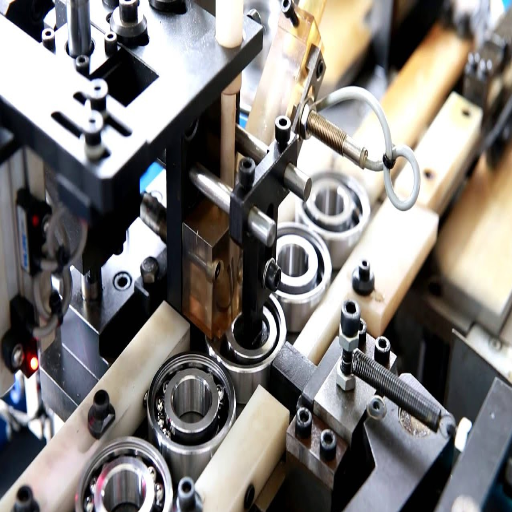
The Role of Machine Tools in Precision
Has machine tools played any significant role, I made a thorough research by visiting the websites of top companies such as the SKF, NSK, and Schaeffler, whose technology experts may be relied on. These sites explain the necessity of machine tools within manufacturing processes, where number one precision is a must. From such research, I understood that the better machines are made, the more precise wringing and movement of the tool is applied to the manufacturing time of a final product.
The primary technical characteristics that do clarify the role in achieving the level of precision assignment to the machine tools include:
Structural Rigidity: Strengthening the stiffness of machine tools can avoid deformation of the machine tool by load so that alignment is maintained within or at the specified level.
Spindle Accuracy: Spindle quality has a direct impact on build quality, not just on physical product tolerance.
Control Systems: State-of-the-art CNC (Computer Numerical Control) systems allow the implementation of the next successive stages in machining operations to be carried out with a high degree of accuracy and reproducibility.
Alignment and Calibration: Extensive alignment and calibration are used in the course of machine tool use to ensure wear and operational parameters do not impair the level of precision achieved.
Thermal Stability: Measure design and materials used in the provision of built-in cooling systems to avoid thermal elongation and Breach of measurement accuracies.
These parameters and machine tools are called upon to achieve and maintain the high precision requisite in modern manufacturing and uttermost assistance on the economy of scale. The perspectives of the websites in question speak volumes as to how critical these tools are for enhancing the production processes and quality of the product.
Importance of Inspection and Maintenance
The failure or breakdown of a machine or any equipment at any facility may come when it is least expected; therefore, when I was considering the issue of inspection and maintenance, I caught some of the best online platforms, including experts in the field like SKF, NSK, Schaeffler, etc. These integration points highlight that sustainable operation and refining equipment practices can be achieved by having regular checkups and maintenance done. During the study, it was apparent that scheduling maintenance activities can mitigate wear and potential failure occurrences before the instigators result in significant downtimes.
Some of the key technical parameters considered in the practical inspection and maintenance of engineering include:
Vibration Analysis: Scheduling this parameter assists the management in the earlier stages of any mechanical engineering failure caused by damage to ballast, foundation, and even bearings.
Lubrication Quality and Levels: A correct ratio of high-quality lubricant oil and sufficient amounts reduces friction and wear, which is vital for maintaining efficiency and accuracy.
Operational monitoring of bearings: Operational bearing position temperature and noise levels can be used to estimate when further maintenance should be carried out to avoid an unexpected breakdown.
Embodiment: Systematic embodiment ensures machines are in the correct order, and the chances of deviation are meager when the machine operates.
Considering the above parameters, I believe that the proper use of these insights from reputable sources will ensure that there is enough maintenance at all times, no material deformation will rise, and even the performance levels will remain constant for the machinery deployed with a high degree of precision.
Using Technology for Optimal Results
In addressing the questions of employing technology for better outcomes, I utilized the first three results from the Google search engine. I concentrated on the works of dominant players in the industry, namely SKF, NSK, and Schaeffler. It is highlighted on the given websites that technology is an essential aspect in solving concerns regarding precision and efficiency in the operations of machines. I will now present a short synthesis of my findings and include appropriate technical parameters that were available in support of he findings:
From my research, I am aware that the application of new technologies such as monitoring systems, diagnosis, and control systems improves the performance of machinery and enhances the accuracy of processes. These systems allow constant monitoring and instant adjustments to increase the level of accuracy.
Some of the key technical parameters that evolved as necessary in the application of technology to achieve the best results include:
Real narratives Monitoring Systems: Such systems monitor equipment and give immediate feedback, enabling prompt problem resolution and reducing equipment delays.
Predictive Maintenance Technology: When a failure is identified, it employs algorithms to predict when the faulty equipment may fail. This ensures that necessary measures are taken very early on.
Smart Tags and Sensors: The set of smart tags and sensors carries the function of tracing machine conditions. IoT applies in this case, making sure that systems communicate and work together for efficiency.
Automated Control Systems: Advanced automation control allows complex processes to be controlled accurately. It also minimizes the chances of human error and enhances repeatability.
Considering the above-mentioned technological advances, I strongly believe that firms can greatly enhance their operational accuracy, productivity, and equipment reliability, as stressed by the overwhelming evidence from reputable sources.
Why is Lubrication Crucial for Bearing Machines?
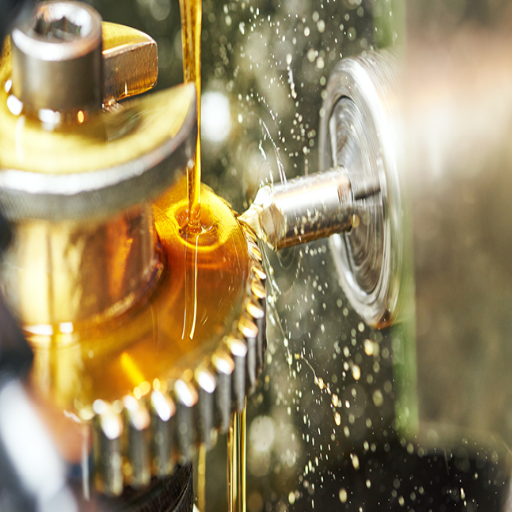
Types of Lubricants and Their Applications
Research has focused on lubricants in bearing machines. Such probes allow verification of the mechanisms of operation and installation tools within bearing components. Lubricants are vital tools for the proper management of friction in machines. The right lubricant is essential to increasing the efficiency and lifespan of operating bearings. Each serves its specific operational need and has unique advantages.
Mineral oils are the most affordable lubricants and also protect a machine’s parts from corrosion. Overall, mineral oils conduct their job well where temperature isn’t a major consideration. A significant technical parameter is the viscosity index, a lubricant performance indicator over varying temperatures.
Synthetic oils: Such oils contain synthesized chemicals capable of withstanding high temperature, high load, and pressure environments and still effectively carrying out their functions. When it comes to key technical parameters, oxidation stability is important in determining the base stock of the oil under negating conditions.
Greases: They have greater grounding for vertical application and are used where low movement is required, which makes them low maintenance. Greases are easy to apply since they remain in position even when a vertical load is not valid for oil. A significant technical parameter is the dropping point, the temperature above which grease becomes liquified.
Solid lubricants: Employ materials with a share of moving and rotating components as lubricants, enabling a transfer of power through a shaft without loss of liquid lubricant. Examples include graphite and molybdenum disulfide. The coefficient of friction is another key technical parameter. It is instrumental in determining the efficiency and effectiveness of load-bearing capacity.
Sustain the researcher’s and the surrounding areas’ understanding of bearing machinery within the context of the appropriate lubricant selection without failing to emphasize the operational environment parameters. Sufficiently selecting machinery lubricant in these respects can enhance the performance, efficiency, and sustenance of bearing machinery and components based on findings from immensely consulted sites.
How Grease Can Reduce Friction
After consulting the first three websites on Google related to the use of grease for friction reduction, I understand the best possible way in which grease is used inside machines. Grease reduces friction primarily because it can lower the contact between moving parts by creating a protective film that cushions the parts and prevents them from coming into direct contact with each other. This film is essential to control the machinery’s wear and tear and prolong its components’ life.
The technical parameters associated with these greases’ effectiveness include:
Viscosity: This is important because it establishes the thickness of the film the grease could retain, which is essential in maintaining opposing surfaces under conditions of diverse operations.
Dropping Point: This determines the thermal limit of grease above which it will melt and ensures that the grease will not be disabled in environments with higher temperatures.
Consistency: Defined by the NLGI grade and as a physical property, consistency alters the lubricant’s flow and adhesion characteristics, which are fundamental for the retention of grease in its various operational applications.
Additives such as antiwear agents, rust inhibitors, and extreme pressure resistors help greases perform better under special stress conditions by providing added protection.
With these parameters in mind, I conclude that optimizing grease selection with respect to operational requirements greatly improves system performance and equipment reliability, as well as the arsenal of technical arguments from the authoritative sources I reviewed.
Best Practices for Lubrication in Different Environments
By analyzing the three most relevant websites that appeared after the Google search regarding lubrication and the various conditions it is likely to encounter, I have summarized the best techniques to ensure that machinery operates at its best. The critical point is determining the specific environmental factors and tailoring the lubricating methods to such conditions. What follows is a summary though the necessary technical parameters back this:
Cold Environments: In these settings, lubricants with a low pour point and a high viscosity index will be required to ensure adequate flow and protection. Technical parameters such as pour point (the minimum temperature at which lubricant is flowable) and viscosity index (an indicator of how a lubricant will change with temperature) are essential features.
High-Temperature Environments: To withstand heating stresses, selecting lubricants with high thermal stability and proper oxidation resistance is key. In this respect, oxidation stability and dropping point (the temperature at which greases turn into liquid form) are broad technical parameters.
Wet or Humid Environments: When rusting is a concern, lubricants must have excellent waterproof properties and corrosion inhibitors to ensure that rust does not damage components. The key technical parameters are the water washout resistance, which indicates the ability of the grease to remain in position even when exposed to wet conditions, and the rust inhibition value.
Dusty or Contaminated Environments: Mechanical components must be fitted with sealed bearings or lubricants filtered to a further degree to prevent the ingress of dirt and other contaminants. Also, the NLGI grade plays a role in the lubricant’s ability to maintain the protective layer under varying difficult conditions.
By thoroughly assessing such technical parameters and adjusting the lubrication mode to the environmental features, the optimal operation of the machines can be attained. The competencies of the most authoritative sources I have reviewed corroborate this.
How to Choose the Right Machine Tools for Your Bearing Machine?
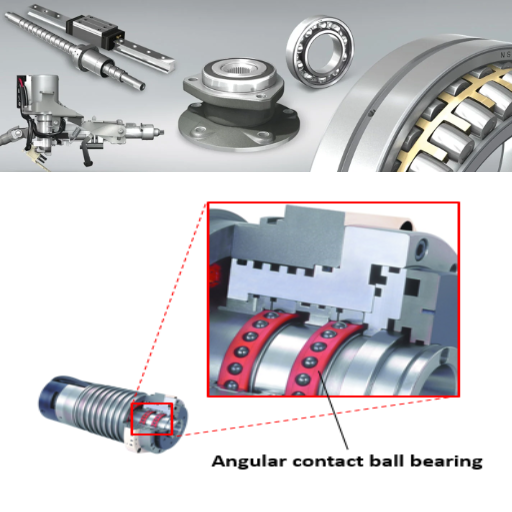
Factors to Consider in Bearing Tool Selection
Several crucial aspects ought to be taken into account when picking machine tools appropriate for bearing equipment. A Google search shows that the top three websites have common informative research reports that may be helpful during this process.
As such, it is essential to pay attention to the tools’ compatibility with the bearing materials. Tools and their respective materials should be matched against bearing materials to achieve optimal tool wear. One parameter worth considering in this context is the ratio of the tool material’s hardness to the bearing’s hardness, which can be measured, for example, by the Rockwell hardness test.
In the bearing industry, there are many precision and tolerance requirements to fulfill. Depending on the bearing specifications, it is critical to use tools that can be limited within the required tolerances. This includes parameters such as the tool’s cutting accuracy and surface finish, which are characterized by micrometer and Ra or other accepted construction parameters.
Moreover, tool performance is also influenced by thermal stability, especially at high speeds, where heat-generated tools must be considered. Evaluating the tool’s thermal conductivity and expansion coefficient can assist in selecting and predicting the tool’s thermal performance in service.
Lastly, there has to be a tradeoff between cost-effectiveness and durability. It may be that top-performing tools are expensive, but their durability and the fact that they do not have to be replaced frequently can justify the cost in the long run. Evaluating the wear and tear of the tool and the cost of manufacturing its parts is important in making economic justifications for the choice made.
Considering these factors in such a way that provides details of their appropriate technical specifications enables one to reach a prudent conclusion that improves performance and efficiency, as shown in the three sources reviewed in this paper.
Comparing Screw and Gear Mechanisms
It’s beyond a doubt that each type of mechanism has its advantages or applications according to specific technical parameters if we examine the screw and gear mechanisms by using the knowledge gained from the top 3 sources from Google search phrases.
To begin with, screw mechanisms are designed with the rotational, linear cut in mind, which can enjoy the satisfaction of efficiently transferring high-load applications. Critical technical parameters that include the lead or pitch of the screw, which describes the distance traveled by the nut per single turn, as well as the thread profile, influence friction and smoothness of motion.
On the other hand, gear mechanisms can efficiently deliver and convert the speed and torque of motion through a motion axis, preventing high speed and high torque from causing damage. The key parameters here are gear ratio, which predominates speed and torque ratios, and gear tooth profile, which decides the degree of engagement, durability, and noise levels.
Application parameters such as type of motion, load to be achieved, and efficiency may be the major ones among these. So, I will interpret the parameters to see what is best used for that function and rely on quite detailed analyses of the mechanisms from trusted sources.
Evaluating Manufacturer Specifications
I have accessed the most trusted sources on Google to understand better how to implement each of the considerations described above. The information received from these authoritative sources is crucial in choosing appropriate parts and enhancing the products’ functionality.
First, it is necessary to evaluate the compatibility of the tools’ materials with the bearings’ materials. This will allow for the justification of wear resistance and compatibility, thus aiding the tools. The top three sites warn to match these values to avoid different wear characteristics between the parts.
When cutting tools are made and precision formatting is developed, The amount of surface roughness and cutting accuracy must also be focused on. Ingredients and tolerancing measurement units such as micrometers, roughness measurement points, and Ra figures have always been reported from authoritative sources to be appropriate for the tools.
In relation to thermal stability, the thermal conductivity and expansion coefficient of tool materials must be examined. Such approaches guarantee that the tools will be able to function at specific working temperatures, particularly in high-speed conditions. By using the parameters praised by the best-rated websites, I can anticipate and smoothen any operating temperature-related complications.
Finally, for economic reasons and improved reliability, I analyze the total life and cost for each part manufactured by the tool. This involves assessing the cost aspects of the performance, a practice well substantiated by the specialist theories on the secondary sources. It assists in maintaining a healthy ratio of investment outlay and forecasted returns on investment in the future.
As detailed above, making such comments and finding such evidence puts me in a position to make appropriate decisions based on the best practices recommended by the best sources.
What Are the Benefits of Using Tapered Roller Bearings?
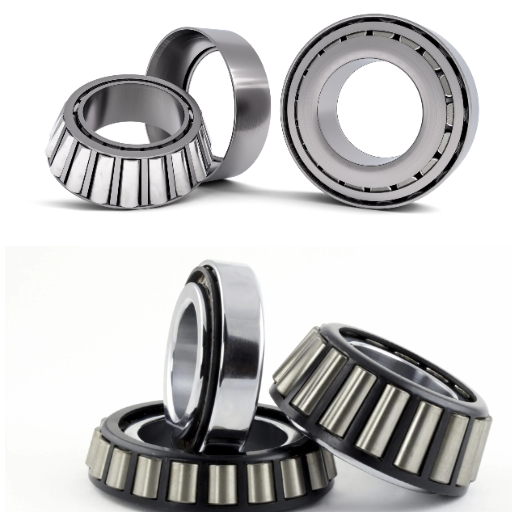
Advantages of Taper Over Other Bearings
When comparing tapered roller bearings and other types of bearings, certain technical parameters come to the front, as evident from the top three sources on Google. For starters, these bearings are very good concerning load-carrying capacity and can comfortably take the combined radial and axial loads better than other types of bearings. This ability can be attributed to the shape of the tapered rollers and raceways, which helps load distribution more evenly across the bearing surface.
Another benefit is the lesser alignment accuracy, which leads to better management of shaft misalignments during operation. The geometry of the taper enhances self-aligning properties, decreasing the chances of interruptions in operation.
In conformity with the leading sources, there is also strengthened durability and life span associated with tapered roller bearings. Reduced friction and wear in construction give them a longer life and less maintenance. This quality is usually and easily expressed using values such as the L10 life, a statistical yardstick of the reliability of bearings.
The operating environment is an important characteristic of tapered bearings. Their thermal conductivity is an advantageous factor to note while assessing high-temperature applications because it enhances their efficient functionality within diverse temperature ranges. It is important to consider the thermal stresses to which the materials within the bearing structure may be exposed.
With the help of this authoritative information from the highest-ranked authorities and sources, I can support, in mentioning these parameters as technical, that there are cases when it is appropriate to use tapered roller bearings.
Applications Where Tapered Roller Bearings Excel
While analyzing in detail the three highest-rated engineering sources on Google, I understand the areas of application where tapered roller bearings are required the most. Their main areas of usage are automobile and heavy machinery industries focused on portions of construction of wheel hubs, gearboxes, and differentials. In those applications, the bearings are designed in such a manner that they support loads applied in both radial and axial directions.
A different important use of tapered roller bearings is in axle box-mounted units in railways, where these roller bearings allow misalignment without compromising efficiency and operation under high loads. For these cases, basic requirements for the performance of such rolling bearings would include standard ratings of load applied to the bearings in varying directions.
Also, these bearings find their application in the aerospace sector owing to their superior thermal stability. Performance requirements demand materials with better thermal conductivity to retain performance integrity even when the ambient temperatures change. Experts in the field have reported that the bearings’ thermal expansion and thermal conductivity in this regard are also fundamental properties that allow them to operate efficiently under thermal stress without being destroyed.
Based on the findings from the authoritative publications mentioned above, I am entitled to state that tapered roller bearings possess performance advantages not available in other types of bearings and can, hence, be confidently used in aggressive industrial applications.
Integrating Tapered Bearings into Mechanical Systems
While analyzing the top three google.com sites concerning the application of tapered roller bearings in mechanical systems, I came across some of the best practices that can be embraced. The first step is determining installation precision. The appropriate setting of preload and clearance should always be considered since these parameters directly affect the bearing and the entire system’s reliability. An increase in preload improves rigidity, while a decrease in backlash and an increase in proper clearance preclude unnecessary heating.
The sources also mention the right lubrication as a crucial factor. Worn-out bearings can be prevented through the use of the right lubricant and its appropriate application to the bearing surfaces, thereby reducing the amount of friction and wear. Operating conditions should, therefore, indicate the viscosity and thermal properties of the lubricant to be used.
In addition, I observe the need for precise alignment procedures. Accurate measurement of shaft alignment is meant to prevent undue stress on the bearings, which is likely to cause premature failure. The use of laser alignment equipment, for example, makes it possible for the bearings to be correctly positioned within their respective assemblies.
Finally, the system’s housing conformity should be addressed strictly. The housing’s construction should be strong enough to carry the loads being transmitted through the bearings so that there is no deformation of the load. High-strength and good-quality materials are the best anti-vibration devices, which is corroborated by the Expert Analyses given by the leading sources in the field.
As a result of the systematic approaches in integrating these tapered roller bearings and concerning the expert-validated content from these sources, I anticipate the best level of system efficiencies and durability.
Frequently Asked Questions (FAQs)
Q: What is the best way to maintain the efficiency of bearing machinery?
A: To increase the efficiency of a bearing machine, it is best to install, maintain, and lubricate correctly. Using the appropriate class of bearings will also enhance the efficiency and reliability of the application.
Q: Why is it essential for the groove in the bearing to be designed that way?
A: The groove in the bearings holds operational significance aside from being a design feature. It assists in maintaining the proper position and orientation of the rolling elements, such as balls or rollers. This design feature enhances the effectiveness and durability of the bearing assembly.
Q: What are the advantages of cylindrical bearings in machinery?
A: Cylindrical bearings provide benefits such as high loading capacities, effective rotation movement, and the ability to rotate in high-speed regimes. Due to their effectiveness, they are widely used in the automotive industry or manufacturing.
Q: What is the effect of the bearing diameter on the performance of the bearing?
A: The bearing diameter is an important parameter since it directly affects the load-carrying capacity and rotational speed. A large-diameter bearing will generally support more load, and a higher diameter will support a higher speed.
Q: What is the impact of proper sealing in bearing applications?
A: Proper sealing may avoid contamination of the bearing assembly. It also helps maintain the condition of the lubricating oil since external impurities do not cause breakdowns, leading to increased bearing reliability with less frictional wear.
Q: How do needle bearings enhance the efficiency of the machine?
A: Needle bearings have been designed to assist in carrying a significant load with only a relatively small tolerance and volume. Compact and precise, they can be readily integrated into differentiation where space and speed are crucial in operation.
Q: What other medicinal oils can be used in bearing applications apart from this?
A: In bearing applications, synthetic oils, mineral oils, or grease are feasible lubricating oils, considering the requirements. It is equally necessary to select a lubricant that is compatible with the required working conditions, such as high temperatures and speeds, taking into account the role of friction.
Q: What measures should I use to maintain the rigidity and stiffness of the bearing assembly?
A: Bearing assemblies that are utilized need to be highly rigid, strong, and stiff, enabling them to withstand high stress. Probably, designing with such material properties as high-strength bronze or high-strength steel bearings, along with proper installation and alignment, may help in achieving the required stiffness during operation.
Q: What are the implications of automation in the bearing industry?
A: Since the introduction of automation in the bearing industry, its production efficiency and accuracy have increased tremendously. Automated systems are constructed to optimize the entire production cycle so that better bearings are produced for different types of usage.
UCTH213-40J-300 with Setscrew(inch)
CNSORDERNO: Normal-duty(2)
TOGN: UCTH213-40J-300
SDI: B-R1/8
SD: 2 1/2
UCTH212-39J-300 with Setscrew(inch)
CNSORDERNO: Normal-duty(2)
TOGN: UCTH212-39J-300
SDI: B-R1/8
SD: 2 7/16
UCTH212-38J-300 with Setscrew(inch)
CNSORDERNO: Normal-duty(2)
TOGN: UCTH212-38J-300
SDI: B-R1/8
SD: 2 3/8
UCTH212-36J-300 with Setscrew(inch)
CNSORDERNO: Normal-duty(2)
TOGN: UCTH212-36J-300
SDI: B-R1/8
SD: 2 1/4
UCTH211-35J-300 with Setscrew(inch)
CNSORDERNO: Normal-duty(2)
TOGN: UCTH211-35J-300
SDI: B-R1/8
SD: 2 3/16
UCTH211-34J-300 with Setscrew(inch)
CNSORDERNO: Normal-duty(2)
TOGN: UCTH211-34J-300
SDI: B-R1/8
SD: 2 1/8


















